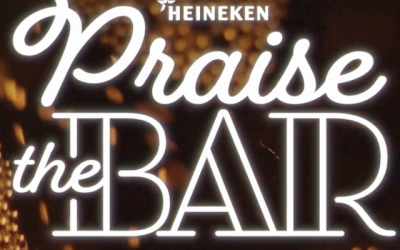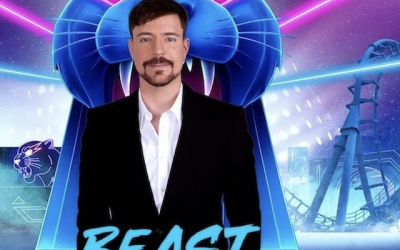In a digital age defined by infinite scrolling and fractured attention, three of the UK’s most powerful media executives shared one stage at Web Summit 2025 in Lisbon to confront a fundamental question: how do trusted news brands keep readers loyal without compromising on integrity?
Moderated by Süddeutsche Zeitung editor-in-chief Judith Wittwer, the session – titled Scroll, Click, Repeat – brought together Anna Bateson, CEO of The Guardian; Luke Bradley-Jones, President of The Economist; and Christian Broughton, CEO of The Independent. What followed was a rare and revealing conversation about how legacy media is adapting to the pace, chaos and opportunity of the digital-first world.
Bateson, who took over The Guardian in 2022, framed the moment as “just the next totemic platform shift.” Having guided the brand through multiple waves of technological disruption, she said the key to survival remains the same: “Pay attention to your audience. Understand new technology – and be clear about what doesn’t change.” For The Guardian, that means staying rooted in purpose and values while continuing to experiment across platforms.
Bradley-Jones, formerly of Disney and Sky, outlined The Economist’s approach through what he called “the three Ds”: differentiation, direct relationships, and discoverability. The magazine, he said, is doubling down on its “artisanal, human-created” content – especially in audio and video – as a point of distinction from the flood of algorithmic material now filling feeds. “We’re really leaning into the human connection that AI can’t substitute,” he said.
The Economist has also made direct subscription relationships a strategic priority. “We’re a subscription business – customers have to want to come directly to our products,” Bradley-Jones said. In a “post-search world,” brand strength and marketing matter more than ever. “Discoverability now depends on trust and visibility, not just search,” he said, confirming that the publication has increased its marketing investment year-on-year.
For The Independent, which famously scrapped its print edition in 2016, embracing change has been existential. “We closed the paper because we loved The Independent and wanted it to survive,” Broughton said. Since then, the brand has doubled both revenue and profit without external investment. “Our revenues are now bigger than when we had three print titles. It’s sustainable, it’s growing, and it’s supporting high-quality journalism,” he said.
Broughton described a newsroom increasingly powered by “talent-led media” – podcasts, documentaries, and on-camera personalities driving loyalty and engagement. “People buy into a person and a subject,” he explained. “It’s deep engagement – not junk clicks.”
He cited the work of international correspondent Bel Trew, whose documentary series On the Ground has tackled issues from HIV in Uganda to conflict in Gaza. “It’s creator-led, but it’s serious journalism,” he said. “The same values that defined the newspaper now define our digital studio.”
Bateson agreed that editorial principles must guide every technological evolution. “You have to invest where you can grow – but always in a way that’s distinctive and aligned with your values,” she said. The Guardian’s voluntary supporter model – now a global case study in reader-funded journalism – is one such example. When it launched, Bateson admitted, “everyone thought it was financial suicide.” But the experiment paid off: readers proved willing to pay for free content when they understood what their contribution enabled. “People feel emotionally connected to journalism,” she said. “They value it, they understand its role in society, and they want it to be accessible to everyone.”
If The Guardian’s success lies in its moral contract with readers, The Economist’s strength lies in loyalty built over generations. Bradley-Jones said the publication’s subscriber base splits evenly between print, digital and audio consumers. The audience gets younger across those segments – a demographic shift accelerated by The Economist’s hit podcasts and new long-form video series The Economist Insider. “It lets customers get closer to our journalists and unpacks the stories behind our reporting,” he said. “Audio and video are now converging into one powerful form.”
Video has also become a major pillar for The Independent, which now operates a production arm called Independent Studio. Broughton cited its sports vertical A CFC (The Adam Clery Football Channel) as a model for the future: “It started on YouTube, now has memberships, events, merchandise, and 85 per cent of viewers still watching after 15 minutes. That’s deep engagement.”
Yet beneath the optimism, all three leaders acknowledged the looming question shaping every newsroom: what role should AI play? Bradley-Jones called it “friend and foe.” The Economist uses AI for translation, summaries, and text-to-speech but blocks crawlers from major AI platforms. “We’re not giving our journalism away to engines that don’t drive traffic back,” he said.
Broughton said The Independent has gone hands-on, developing its own AI-powered news app called Bulletin, designed to deliver personalised, audio-enabled summaries. “It’s about taking away the boring parts of the job so our journalists can spend more time reporting,” he said.
Bateson took a cautious but open stance. “AI is profound,” she said. “We don’t yet know how it will influence what we do, but we have to experiment safely — in a way that’s consistent with our values. The real risk is losing the trust of your audience.”
As the session closed, Wittwer returned to her opening question: how do you protect editorial integrity in a world built for distraction? None of the panellists offered a single answer, but together they drew a line in the sand: authenticity, depth and human connection are the only defences that matter.
In a world of endless scroll, their message was clear – journalism’s future won’t be written by algorithms, but by people who still believe in the story.





